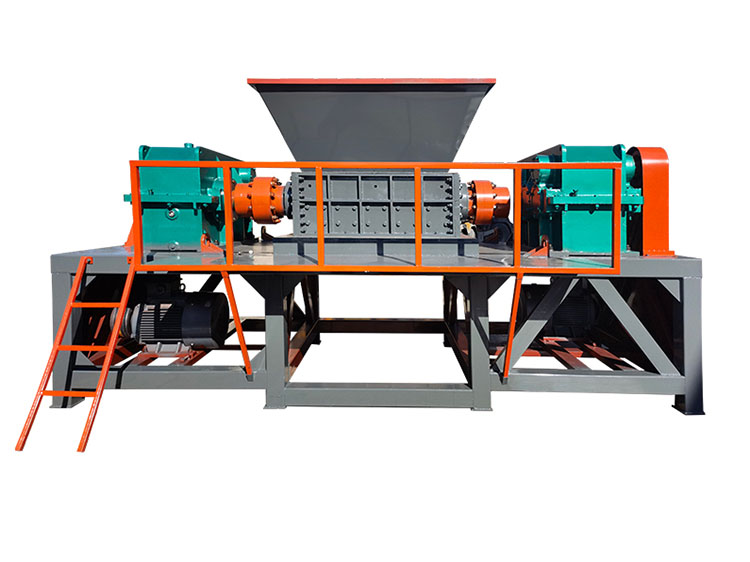Double Shaft Shredder
Double shaft shredder features a twin-shaft design with high-speed rotating blades and cutters that shear, tear, and compress materials into small particles. It is widely used across industries for processing plastics, rubber, wood, metals, and other solid wastes.
- Dual-shaft system and multi-claw blades for efficient shredding.
- Low-speed and high-torque operation.
- Blades are made from high-quality alloy steel, such as 9CrSi, for durability and wear resistance.
- Customizable cutter structure, thickness to meet specific needs.
Dual Shaft Shredder for Sale
Double shaft shredder is designed to reduce material size through a shearing and tearing process between two sets of rotating shafts with cutting blades. This versatile machine is ideal for shredding a wide range of materials, including wood, municipal waste, kitchen waste, plastics, metals, and other solid waste.
At Furui Machinery, we offer a wide range of twin shaft shredders for sale. Our smaller models can be easily integrated with our screw press machines, while larger models can work with screw presses using conveyor belts. Please refer to the table below for more details.
| Model | Shredder Box Size | Blade Diameter | Blade Thickness | Number of Blades | Power |
| FRSS200 | 200*200mm | 120mm | 15mm | 13pcs | 2.2kW |
| FRSS350 | 350*230mm | 120mm | 18mm | 19pcs | 7.5kW |
| FRSS400 | 400*400mm | 220mm | 20mm | 20pcs | 7.5kW |
| FRSS500 | 500*500mm | 250mm | 20mm | 25pcs | 7.5kW*2 |
| FRSS600 | 600*400mm | 220mm | 20mm | 30pcs | 11kW*2 |
| FRSS800 | 800*600mm | 250mm | 20mm | 40pcs | 30kW*2 |
| FRSS1000 | 1,000*600mm | 300mm | 20mm | 50pcs | 37kW |
| FRSS1200 | 1,200*600mm | 300mm | 30mm | 40pcs | 45kW*2 |
| FRSS1600 | 1,600*1,200mm | 600mm | 60mm | 26pcs | 55kW*2 |
| FRSS1800 | 1,800*1,200mm | 600mm | 60mm | 30pcs | 90kW*2 |
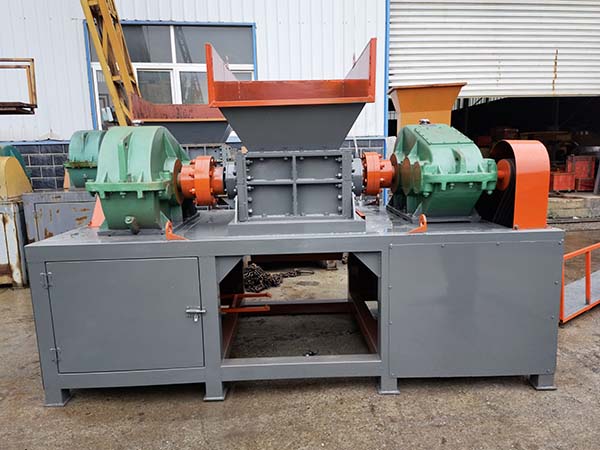
Twin Shaft Shredder
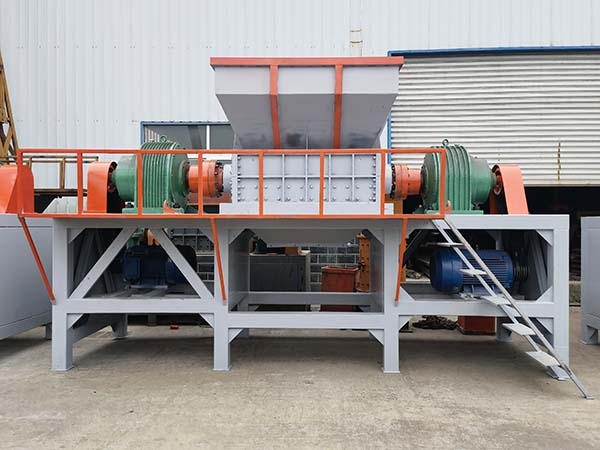
SS600 Shredder
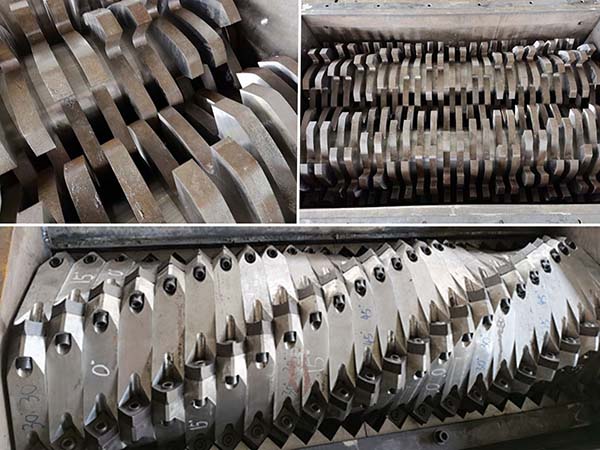
Blades
Features of Dual Shaft Shredder
Applications
A double shaft shredder can process a wide variety of materials, including:
- Plastic waste: including plastic bottles/containers, PVC pipes, plastic bags, and plastic films and sheets;
- Metal: including aluminum cans, scrap metals, steel sheets, shell of household appliances, and more.
- Wood waste: including wooden pallets, wooden crates, branches, and furniture;
- Rubber waste: like tires, rubber hoses, and other rubber products;
- Organic and food waste: biomass materials (stalk, straw, etc.), kitchen waste;
- Textile waste: including clothing, fabric scraps, and carpets.
- Paper waste: including cardboard, paper rolls, and books.
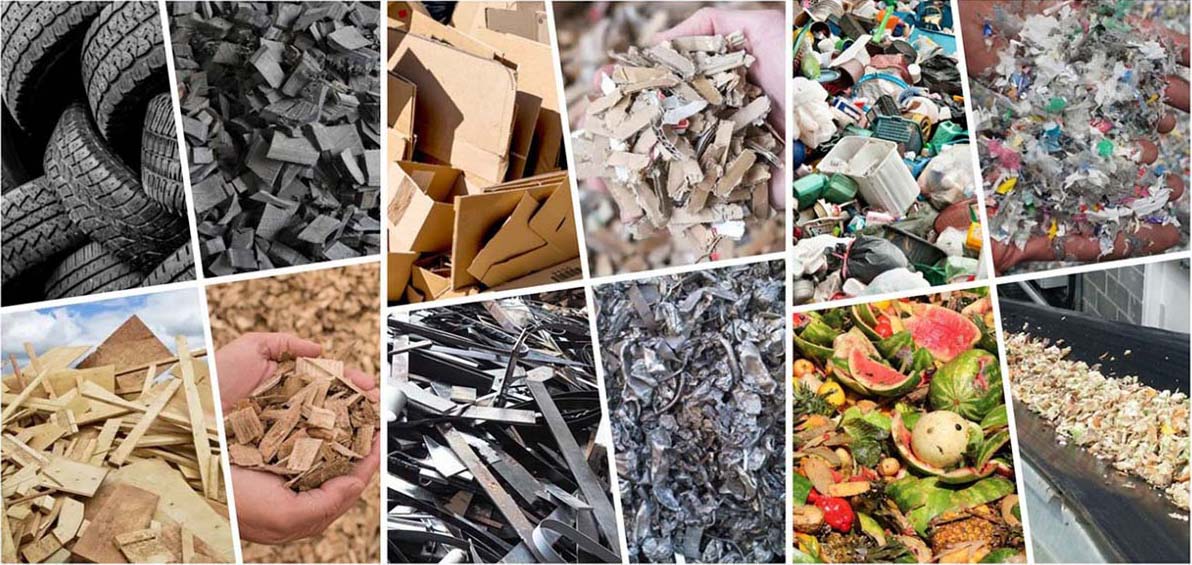
Applications of Shredder
Key Shredder Parts
Each component of the double shaft shredder plays a crucial role in ensuring efficient and reliable performance:
-
Frame: Constructed from Q235 steel, the frame is the structural body of the shredder. It provides support and protection to other components, ensuring the machine's stability and durability.
-
Rotating Shafts: The shredder is equipped with two shafts, placed in parallel. The shafts are connected to the motor through a transmission device to drive the blade system.
-
Blades: The shredder has both movable and fixed blades. The movable blades, attached to the rotating shafts, cut, tear, and shear materials, while the fixed blades prevent material from wrapping around the shafts. The shape and quantity of blades can be customized based on the material being processed.
4. Cutter Disc: The blades are mounted on the cutter disc, which holds them in place and ensures effective cutting action.
5. Transmission System: This system transfers power from the motor to the rotating shafts, typically using gears, chains, or belts, to drive the shredding process.
6. Feeding System: The feeding system delivers waste into the shredder for processing, usually through a feed inlet and conveyor belts.
7. Discharge System: After shredding, the discharge system transfers the processed materials out of the machine, typically through a discharge outlet and conveyor belts.
8. Control System: The control system monitors and manages the shredder's operation, ensuring smooth and safe performance.
How to Choose
A Shredder?
When selecting a dual shaft shredder, it's important to consider several key factors, including the type of material to process, feeding and discharge methods, desired output size, budget, available space, and more.
1. Material Type
- Consider the toughness and hardness of the material being shredded. This helps determine the cutter design and motor power required.
- Will the material be fed in the form of bales, bags, rolls, sheets, or loose materials?
2. Capacity & Desired Output Size
-
How much material needs to be processed daily?
-
Is there a specific output size you aim to achieve? In general, the smaller the required output size, the higher the cost of the shredder.
3. Feeding & Discharging Method
How to feed the material into the shredder and how to discharge the shredded materials—manually, or via conveyor? It is also related to your budget. Welcome to talk with us for more information.
Conclusion
Dual-shaft shredder is an essential tool for efficient material processing. By breaking down bulky items into smaller, manageable pieces, they simplify handling, transportation, and subsequent processing. At Furui Machinery, we often integrate shredders with our screw press machines for material preparation. For example, shredding fruits before extracting maximizes juice yield, demonstrating the benefits of this combination. Whether you're in recycling, manufacturing, or waste disposal, investing in a dual-shaft shredder can significantly enhance productivity and reduce costs. Welcome to contact us for more details!

Talk With Us Today for A Free Consultation!
Call us or contact us by WhataApp / Wechat

